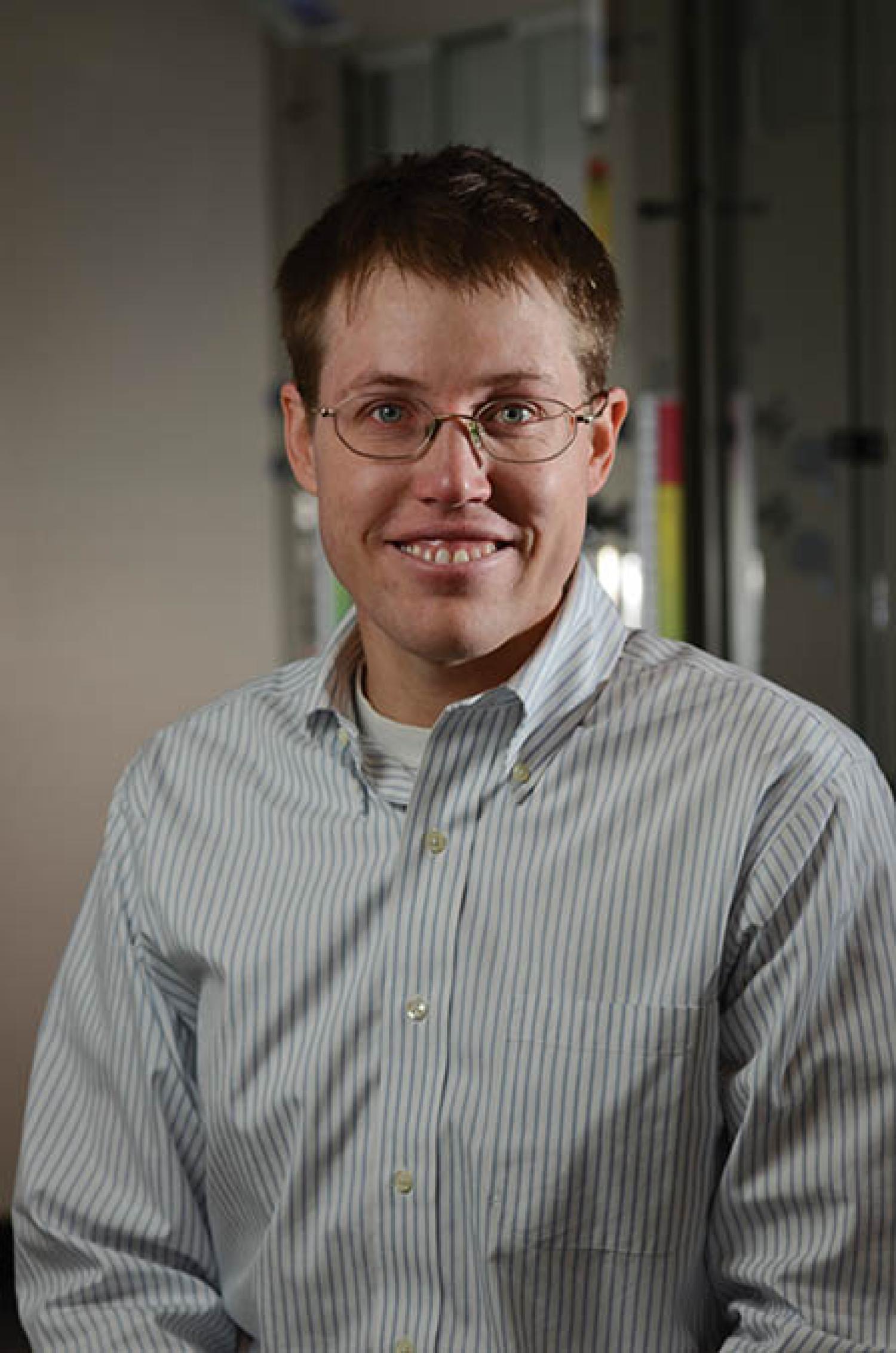Loren Hough
- Associate Professor
- PHYSICS

Address
Office: DUAN F527
Research Interests:
Professor Hough currently studies intrinsically disordered proteins using solution NMR. Proteins containing disordered domains perform many important cellular functions. The aggregations of this family of proteins is implicated in neuodegenerative diseases such as Alzheimer's and Parkinson's diseases. he has developed in-cell nuclear magnetic resonance techniques to study the disordered proteins that form the selective barrier of the nuclear pore complex. He is currently extending this in-cell method to study similar proteins, especially those involved in transcriptional regulation.
Selected Publications:
- "The role of competition in karyopherin-FG Nup interactions; a key to efficient transport through the nuclear pore complex", Jaclyn Tetenbaum-Novatt, Loren E. Hough, R. Mironska, AS McKenney, Michael Rout, Mol Cell Proteomics 11 (5), 31-46 (May 2012).
- "Structure of the B4 Liquid Crystal Phase near a Glass Surface", Dong Chen, MS Heberling, M. Nakata, Loren E. Hough, JE Maclennan, MA Glaser, E. Korblova, DM Walba, J. Watanabe, Noel A. Clark, ChemPhysChem 13, 155-159 (Jan 2012).
- "Interface structure of the dark conglomerate liquid crystal phase", Dong Chen, Yongqiang Shen, Chenhui Zhu, Loren E. Hough, Nlida Gimeno, Matthew A. Glaser, Joseph E. Maclennan, M. Blanca Ros, Noel A. Clark, Soft Matter 7, 1879-1883 (2011).
- "Chiral isotropic liquids from achiral molecules", Loren E. Hough, M. Spannuth, M. Nakata, D. A. Coleman, C. D. Jones, G. Dantlgraber, C. Tschierske, J. Watanabe, E. Krblova, D. M. Walba, J. E. Maclennan, M. A. Glaser, N. A. Clark, Science 24, 452-456 (July 2009).
- "Helical nanofilament phases", L. E. Hough, H. T. Jung, D. Krerke, M. S. Heberling, M. Nakata, C. D. Jones, D. Chen, D. R. Link, J. Zasadzinski, G. Heppke, J. P. Rabe, W. Stocker, E. Krblova, D. M. Walba, M. A. Glaser, N. A. Clark, Science 24, 456-460 (July 2009).
- "Microtubule depolymerization by the kinesin-8 motor Kip3p: a mathematical model", L. E. Hough, A. Schwabe, M. A. Glaser, J. R. McIntosh, and M. D. Betterton, Biophysical Journal 96, 3050 (2009).

